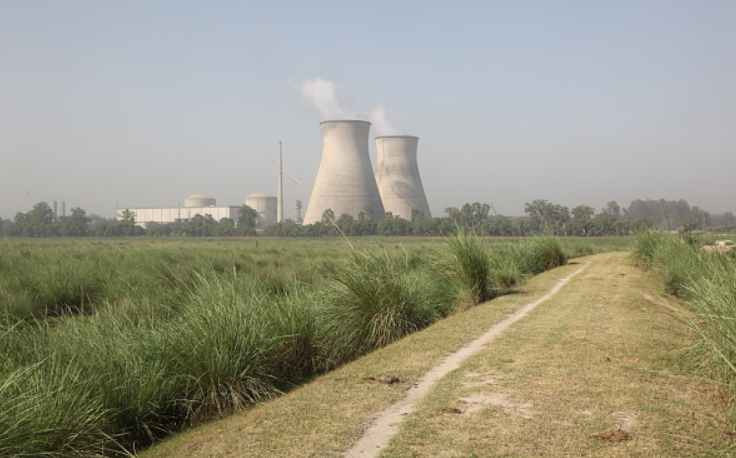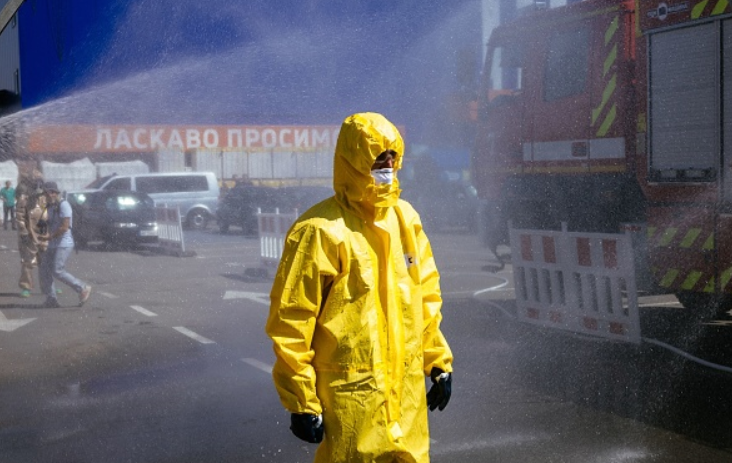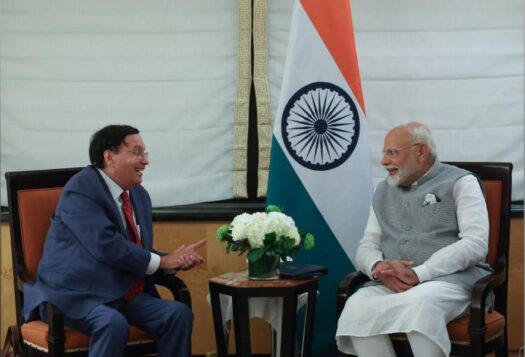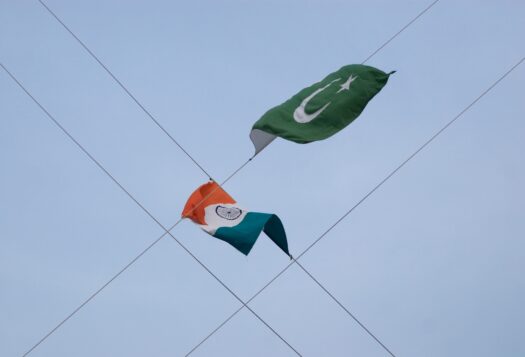
The ongoing Russia-Ukraine War has brought the doomsday clock down to 90 seconds to midnight. Fears abound that a radiological disaster as a result of a military attack on Ukrainian nuclear facilities – whether deliberate or accidental – could lead to radiation exposure to facility workers, nearby civilians, and surrounding environment. Given the unprecedented level of threat on Ukrainian nuclear facilities, it is crucial to better understand the potential for similar scenarios to unfold in other volatile regions around the world.
In South Asia, nuclear-armed rivals India and Pakistan operate several nuclear reactors for both peaceful and military purposes. While policymakers and analysts often highlight the risks of nuclear escalation in South Asia, the risk of a radiological disaster from an attack on Indian or Pakistani nuclear facilities remains underemphasized. This article will highlight lessons learned in the Russia-Ukraine war regarding these nuclear dangers, assess international legal regimes for nuclear security, and propose new measures to protect nuclear facilities in an armed conflict.
The Legal Backdrop
The international legal regime concerning nuclear safety, nuclear security, and emergency preparedness is aimed at protecting workers, people, and the environment from the harmful effects of nuclear radiation. The international nuclear industry has learned from nuclear accidents such as the Chornobyl nuclear disaster of 1986 to improve the safety and security of nuclear technology. A quick overview of the international legal regime concerning nuclear security reveals that the security of nuclear facilities during an armed conflict is not the focus of any multilateral legal instrument. There are, however, a couple of references in two legal instruments.
While policymakers and analysts often highlight the risks of nuclear escalation in South Asia, the risk of a radiological disaster from an attack on Indian or Pakistani nuclear facilities remains underemphasized.
Under international humanitarian law (IHL), a state cannot attack a civilian nuclear power plant that would result in either radioactive fallout or huge civilian losses, according to Article 56 of the Additional Protocols I (1977) of the Geneva Conventions of 1949. Notably, there is no prohibition on targeting nuclear power plants if the electricity is utilized for military operations exclusively for the war effort. The International Convention for the Suppression of Acts of Nuclear Terrorism (ICSANT) also does not fully cover the activities of armed forces during an armed conflict or military exercise. This implies that armed forces are not liable for activities that damage a nuclear facility under this convention.
There are some bilateral legal instruments that are aimed to stave off attacks on nuclear facilities. In 1988, India and Pakistan reached an agreement on the prohibition of attacks against nuclear installations and facilities. Both states undertook to refrain from undertaking, encouraging, or participating in, directly or indirectly, any action aimed at causing the destruction of, or damage to, any nuclear installation or facility in the other country and share the latitude and longitude of their nuclear installations and facilities on January 1st of each calendar year.
Accordingly, India and Pakistan share the list of these nuclear facilities every year since the ratification of this agreement. This is one of the earliest nuclear risk reduction measures between these two countries and both states have followed through on their obligations during times of peace, crises, and heightened tensions.
Lessons learned from Russia-Ukraine War
Although the legal regime has focused on preventing safety lapses and security breaches in nuclear facilities, the potential for attacks on or near the facilities in Ukraine has added another layer of complexity to the challenge of keeping nuclear facilities safe and secure. In general, nuclear facilities are not designed to withstand military attacks. Measures like defense-in-depth and containment may protect a nuclear facility from theft, radiation leakage, or sabotage but it is very difficult to design nuclear facilities that can remain impenetrable in face of targeted air strikes. In the same way, car manufacturers can introduce safety features in cars (e.g. traffic sign recognition, automatic emergency braking) but that does not make them accident-proof.
Military strikes against nuclear facilities have happened before but the situation in Ukraine is unprecedented. Targets of earlier attacks (Osirak, Iraq in 1981 and a suspected nuclear facility in Syria in 2011) were under-construction so radiation leakage was not a concern and attacks took place when war was not active. In Ukraine’s case, not only is there an active war that creates its own complexities, but Russian forces have used the nuclear facility site at Zaporizhzhya as a base for military operations. In response, the IAEA has called for the establishment of a Nuclear Safety and Security Protection Zone at the Zaporizhzhya Nuclear Power Plant (ZNPP).
The effects of a military strike leading to radiation leakage could leave the area uninhabitable until costly and time-consuming mitigation and decontamination efforts take place. In addition to the direct cost of cleanup, the physiological and sociological implications of radiological exposure on the affected people can have long-term impacts. Given the repercussions, an early agreement and establishment of a safety zone is the need of the hour.

Despite fears and apprehensions, measures taken for nuclear safety, nuclear security, and emergency preparedness have kept the Ukrainian nuclear facilities safe so far. The IAEA’s proactive efforts and regular updates about the status of Ukraine’s nuclear facilities have helped assuage the fears of the international community. This is a test case for the future – nuclear reactors are operating in various other countries threatening to go to war. India and Pakistan are two of these countries.
Lessons for the India-Pakistan Rivalry
Pakistan has two nuclear power plants in operation in the coastal city of Karachi. India has a number of nuclear reactors on or near the seashore including in Tarapur, Kaiga, and Kudankulam. Both states have attacked each other’s coastal cities in earlier armed conflicts. India’s navy attacked Karachi’s harbor in 1971 while Pakistan’s navy attacked the Indian coastal city of Dwarka in 1965. With the improvement in missile ranges and accuracy, targeting each other’s nuclear facilities is technically possible for both countries even if these nuclear facilities are not near their adjacent territorial borders.
Any of these nuclear reactors on seashores, in addition to those built inland, are at risk of an aerial attack. While the armed conflicts mentioned above predate their bilateral non-attack agreement, there is no guarantee that this agreement will prevent an attack on nuclear reactors in future armed conflicts. There is limited evidence in the preceding years to make an inference about the future. Despite several crises, both states have not been involved in an armed conflict in the last three decades. Fighting in the Kargil crisis in 1999 was also limited to one sector.
Another issue of an attack on a nuclear reactor is the risk of escalation. An attack on a military nuclear facility could affect the nuclear weapons program while an attack on a civilian nuclear power plant could lead to disruption in the supply of electricity. An attack on a nuclear facility would generate fear among the masses and it can affect the adversary’s will to fight. In the event of radiation release, the nearby areas would likely become contaminated and may become uninhabitable. Evacuation of the affected neighborhoods would add to the misery and suffering of the people and present another challenge to the state as well.
In the event of a large-scale radiation release, transboundary effects may make the attack an international issue. An attack on a nuclear facility during an armed conflict between India and Pakistan could be perceived as an act of aggression that crosses the red line for the targeted state. Such an attack could escalate the armed conflict to the nuclear level. In this context, it is important to contemplate the measures that the international community can take to prevent a disaster in the future.
The Road Ahead
One logical response to the threat posed by a nuclear or radiological accident resulting from a military attack on nuclear facilities is to limit the possibility of such an eventuality. India and Pakistan need to update and expand the list of nuclear facilities which are shared on a yearly basis. Both states have constructed new facilities which should be added to their lists. Additionally, both India and Pakistan should open a dialogue for nuclear risk reduction. Not only will this increase transparency and build mutual trust, it will also increase the predictability of their actions. There is a need to make the language of their bilateral agreement explicit enough so that their nuclear facilities remain protected during an armed conflict. As adjacent nuclear-armed neighbors, a nuclear or radiological disaster in one country can have disastrous effects on the other.
The fear that gripped the world in case of an attack on Ukrainian nuclear facilities could be repeated and worse in South Asia.
A new multilateral international arrangement should outlaw military attacks on or near a nuclear facility by another state. Considering that the IAEA is already a depository body for conventions related to nuclear security, nuclear safety, and emergency preparedness and information, it can provide the platform to negotiate the new legal arrangement as well as assume the role of the depository and monitoring body. State parties to the eventual agreement can declare their nuclear facilities by listing down their geographical coordinates and circulating them as per the IAEA Information Circulars (INFCIRCs). Taking a cue from the India-Pakistan bilateral agreement, state parties can update the list whenever they construct a new nuclear facility in their territories, thus improving transparency and increasing protection against any military attack from another state. This international legal instrument might contain provisions for liability in case of a military attack so that the perpetrator shall pay the damages to the affected state. This will encourage both accountability and punitive action in case of noncompliance. A multilateral legal agreement outlawing military attacks against nuclear facilities would help set a new international norm.
Risks associated with radiation release because of a military attack are enough to give an impetus to the international community to prevent this eventuality. A bilateral agreement between India and Pakistan is not enough to set an international norm or customary practice. Only a multilateral agreement can establish the norm of not attacking nuclear facilities.
Wars and armed conflicts are destructive. Fear of a radiological disaster only exacerbates suffering. The volatile relationship between India and Pakistan, the possibility of a military attack on a nuclear facility, and associated radiation and escalation present a terrifying scenario. The fear that gripped the world in case of an attack on Ukrainian nuclear facilities could be repeated and worse in South Asia. Given the threat of an attack and the repercussions, an international effort is immediately required to prevent this eventuality in South Asia.
***
Click here to read this article in Urdu.
Image 1: Pallava Bagla/Corbis via Getty Images
Image 2: Dimitar Dilkoff/AFP via Getty Images


